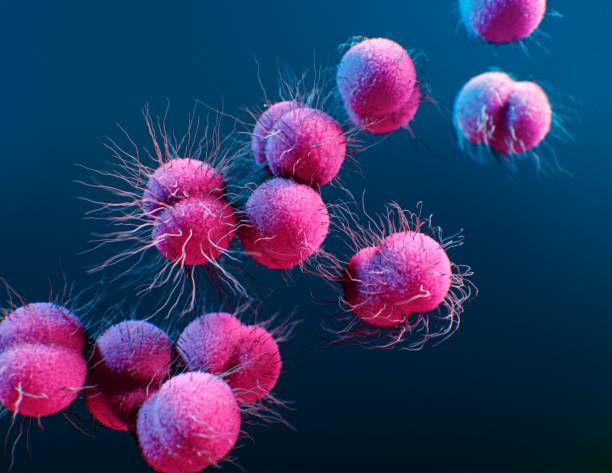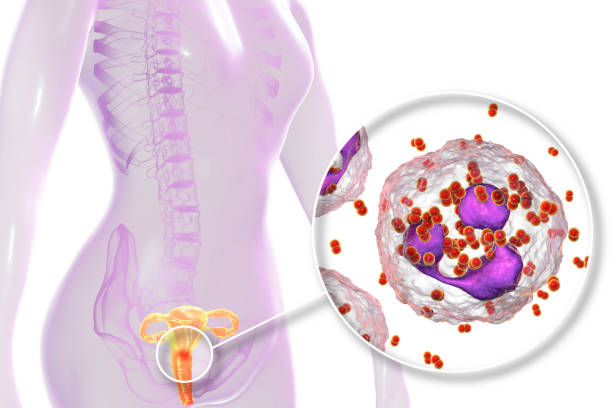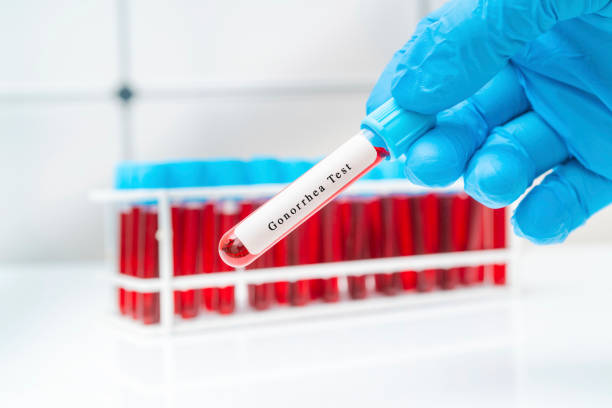- "Gonorrhea – CDC Fact Sheet (Detailed Version)". CDC.
- Morgan, MK; Decker, CF (August 2016). "Gonorrhea". Disease-a-Month. 62 (8): 260–8.
- Workowski, KA; Bolan, GA (5 June 2015). "Sexually transmitted diseases treatment guidelines, 2015". MMWR. Recommendations and Reports. 64 (RR-03): 1–137.
- "Antibiotic-Resistant Gonorrhea Basic Information". CDC.
- Unemo, M (21 August 2015). "Current and future antimicrobial treatment of gonorrhoea – the rapidly evolving Neisseria gonorrhoeae continues to challenge". BMC Infectious Diseases. 15: 364.
- Newman, Lori; Rowley, Jane; Vander Hoorn, Stephen; Wijesooriya, Nalinka Saman; Unemo, Magnus; Low, Nicola; Stevens, Gretchen; Gottlieb, Sami; Kiarie, James; Temmerman, Marleen; Meng, Zhefeng (8 December 2015). "Global Estimates of the Prevalence and Incidence of Four Curable Sexually Transmitted Infections in 2012 Based on Systematic Review and Global Reporting". PLOS ONE. 10 (12)
- Leslie Delong; Nancy Burkhart (27 November 2017). General and Oral Pathology for the Dental Hygienist. Wolters Kluwer Health. p. 787. ISBN 978-1-4963-5453-2.
- Global Burden of Disease Study 2013, Collaborators (22 August 2015). "Global, regional, and national incidence, prevalence, and years lived with disability for 301 acute and chronic diseases and injuries in 188 countries, 1990–2013: a systematic analysis for the Global Burden of Disease Study 2013". Lancet. 386 (9995): 743–800.
- GBD 2015 Mortality and Causes of Death, Collaborators. (8 October 2016). "Global, regional, and national life expectancy, all-cause mortality, and cause-specific mortality for 249 causes of death, 1980–2015: a systematic analysis for the Global Burden of Disease Study 2015". Lancet. 388 (10053): 1459–1544.
- "Gonorrhea - Symptoms and causes". Mayo Clinic. Retrieved 6 August 2019.
- Zakher, Bernadette; Cantor MD, Amy G.; Daeges, Monica; Nelson MD, Heidi (16 December 2014). "Review: Screening for Gonorrhea and Chlamydia: A Systematic Review for the U.S. Prevententive Services Task Force". Annals of Internal Medicine. 161 (12): 884–894.
- Marr, Lisa (2007) [1998]. Sexually Transmitted Diseases: A Physician Tells You What You Need to Know (Second ed.). Baltimore, Maryland: Johns Hopkins University. ISBN 978-0-8018-8658-4.
- "Detailed STD Facts - Gonorrhea". www.cdc.gov.
- Smith, L; Angarone, MP (November 2015). "Sexually Transmitted Infections". The Urologic Clinics of North America. 42 (4): 507–18.
- Ljubin-Sternak, Suncanica; Mestrovic, Tomislav (2014). "Review: Chlamydia trachonmatis and Genital Mycoplasmias: Pathogens with an Impact on Human Reproductive Health". Journal of Pathogens. 2014 (183167)
- Brian R. Shmaefsky (1 January 2009). Gonorrhea. Infobase. p. 52. ISBN 978-1-4381-0142-2.
- Liang Cheng; David G. Bostwick (24 January 2014). Urologic Surgical Pathology E-Book. Elsevier Health Sciences. p. 863. ISBN 978-0-323-08619-6.
- Caini, Saverio; Gandini, Sara; Dudas, Maria; Bremer, Viviane; Severi, Ettore; Gherasim, Alin (2014). "Sexually transmitted infections and prostate cancer risk: A systematic review and meta-analysis". Cancer Epidemiology. 38 (4): 329–338. doi:10.1016/j.canep.2014.06.002.
- "Prophylaxis for Gonococcal and Chlamydial Ophthalmia Neonatorum in the Canadian Guide to Clinical Preventative Health Care" (PDF). Public Health Agency of Canada.
- "Gonorrhea - Symptoms and causes". Mayo Clinic. Retrieved 23 April 2022.
- Trebach, Joshua D.; Chaulk, C. Patrick; Page, Kathleen R.; Tuddenham, Susan; Ghanem, Khalil G. (2015). "Neisseria gonorrhoeae and Chlamydia trachomatis Among Women Reporting Extragenital Exposures". Sexually Transmitted Diseases. 42 (5)
Gonorrhea: Causes, Symptoms, Treatment

Photo source: Getty images
Most common symptoms
- Vaginal Discharge
- Abdominal Pain
- Anal pain
- Urethral pain
- Painful bowel movements
- Testicular pain
- Lower Abdominal Pain
- Painful urination
- Frequent urination
- Frequent urge to urinate
- Fever
- Increased body temperature
- Nausea
- Purulent discharge from the eye
- Bleeding after sexual intercourse
- Erectile dysfunction
- Smelly discharge from the vagina
- Itching of the rectum
- Itching of the vagina
- Vaginal discharge
- Vomiting
- Redness of the conjunctivae
- Reddened penis
Show more symptoms ᐯ
How can gonorrhoea be cured or treated? Medication, antibiotics, no sex.
Show moreGonorrhea is treated by
Other names
Gonorrhoea, gonococcal infection, gonococcal urethritis, the clap














